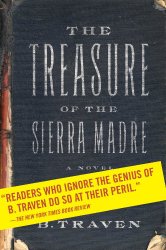See the “Twenty Writers” home page for the current list of “Twenty Writers, Twenty Books”
 Every so often an Internet-age chain letter makes the rounds on the social networks that asks the recipient to list their top ten books. Most people are game because it’s fun to make these lists. Sites like BuzzFeed and Upworthy have built media empires on list-making. David Letterman and “Top 10” are synonymous. We like lists. They’re oddly cozy.
Every so often an Internet-age chain letter makes the rounds on the social networks that asks the recipient to list their top ten books. Most people are game because it’s fun to make these lists. Sites like BuzzFeed and Upworthy have built media empires on list-making. David Letterman and “Top 10” are synonymous. We like lists. They’re oddly cozy.
Generally my friends’ lists of books are a little of the familiar, a little of the unfamiliar, and a bit of the unexpected. Lists are a kind of self-expression. For lists of works like books or music, we’ve even adopted strategies that are similar to the strategies used to make those works in the first place. There’s a tension between highbrow and lowbrow, a fear of being too obvious, a la producing a mix CD of nothing but #1 Top 40 hits, or too obscure, a la a mix CD of Central European filk music. No one wants to put a The Da Vinci Code or The Great Santini at the top of their list of books, even if you love either dearly. If you include that book that doesn’t use the letter e, you should probably add something more accessible, like The Great Gatsby, and maybe even feel clever that both have a similar family name in their title.
When I considered my own top ten books, I realized three things. (Yes, another list.) First, I knew I couldn’t keep my list down to ten, and I certainly didn’t want to number them. A linear ranking just isn’t an accurate diagram for great books. I don’t want to make a catalog of the best to not-the-best, I want to make a “web” of book titles that together represents something larger.
Second, if I was going to make a list of books, I wanted to write about each of them rather than simply present their titles. Some of my motivation here is that I’ve read about these authors and thought a lot about their books, probably more than I sanely should. Writing forces me to make my own decisions and dig a little deeper into the work. I have to take a stand or two, what I feel is important, where I think the work missed the mark. In turn, those decisions have an impact on my own fiction.
Third, my list of books is more driven by authors than titles. To borrow terms from computer science, I’m a depth-first rather than breadth-first reader. When I find an author I like, I tend to dig into their backlist. If an author leaves a palpable impression on on me, I start searching for biographies and book reviews. I don’t buy the notion that we should detach the author from their writing. Fiction is the product of continuous decision-making. The author’s decisions are characterizing of him or herself, just as the decisions of his or her characters accrete to form personalities on the page. I want to tangle with those authorial decisions.
One proviso: I like poetry but don’t feel conversant enough to include any in my list. I’ll just leave it at that.
So here goes, my top twenty books (not ten) and their authors, each written up as a separate entry, unnumbered to avoid creating a sense of best and not-the-best. I’m releasing these as I write them, which means it might be some time before the list is complete (assuming I finish this at all). My list begins with B. Traven’s The Treasure of the Sierra Madre, a book that surprised me in its quality and scope. When I went to learn more about the author, I discovered his name represented one of the great literary mysteries of the 20th Century.
In some ways, I’m writing these entries for myself. I hope they’re informative or enjoyable for you. If you get anything out of them, please leave a comment and share with your friends.
See the “Twenty Writers” home page for the current list of “Twenty Writers, Twenty Books”.